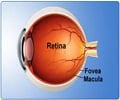Cells derived from human embryonic stem cells (hESCs) have been used to reverse retinal degeneration in an animal model.
Cells derived from human embryonic stem cells (hESCs) have been used to reverse retinal degeneration in an animal model. This news offers new hope that a cure for the devastating eye disease may be available in the near future.
In their laboratory, Dr. Benjamin Reubinoff, Dr. Eyal Banin, and their colleagues from Hadassah-Hebrew University Medical Center in Jerusalem developed conditions to guide hESCs to differentiate into functional cells that resembled the retinal pigment epithelium (RPE).The researchers described RPE as a layer of pigmented cells sandwiched between the visual retinal cells, called photoreceptors, and the nourishing blood vessels at the back of the eye.
They found that nicotinamide (vitamin B3, NIC) and Activin A, an important growth factor, promoted differentiation of hESCs towards an RPE fate.
According to them, the hESC-derived cells exhibited the defining characteristics associated with RPE.
When the researchers transplanted them into an animal model of retinal degeneration, the cells rescued the retina.
"Our findings are an important step towards the potential future use of hESCs to replenish RPE in blinding diseases," concludes Dr. Banin.
Advertisement
Source-ANI
RAS










